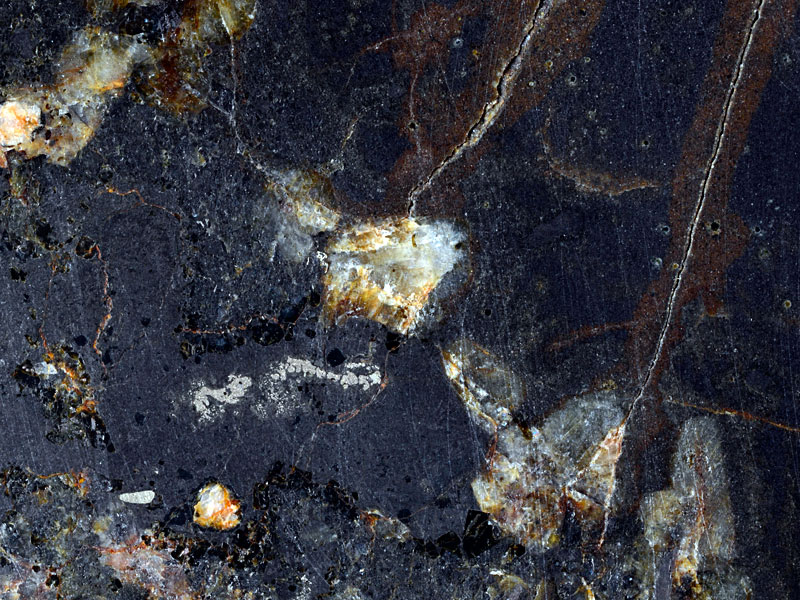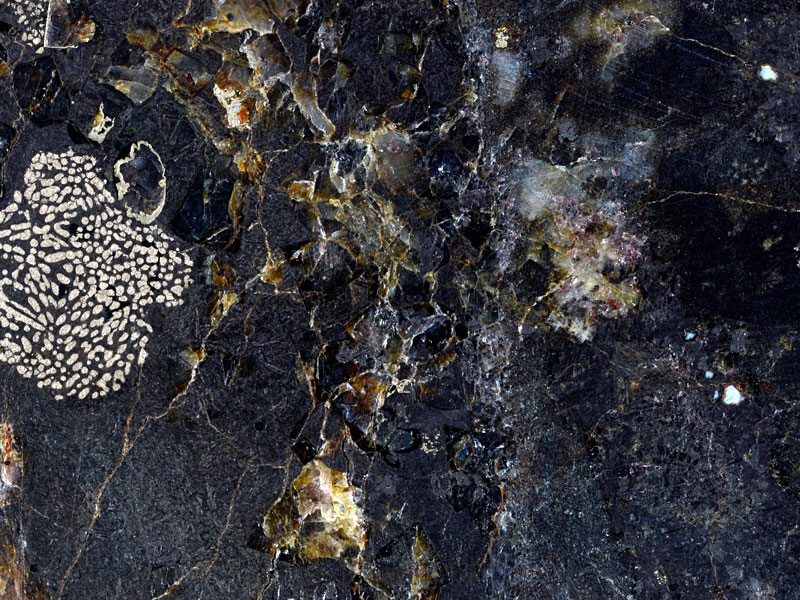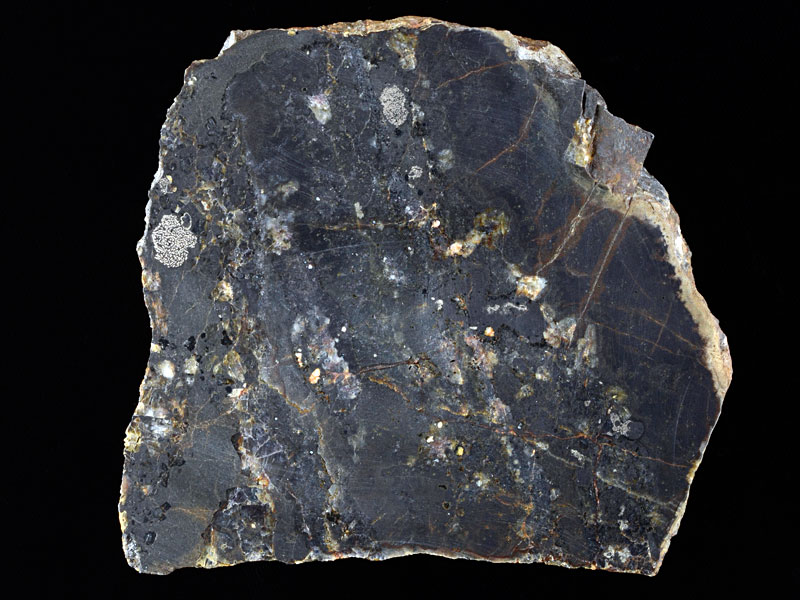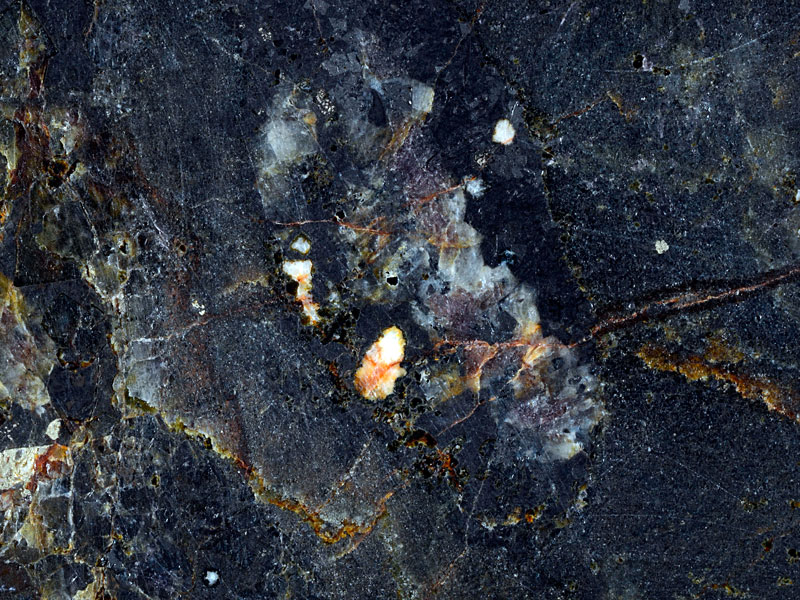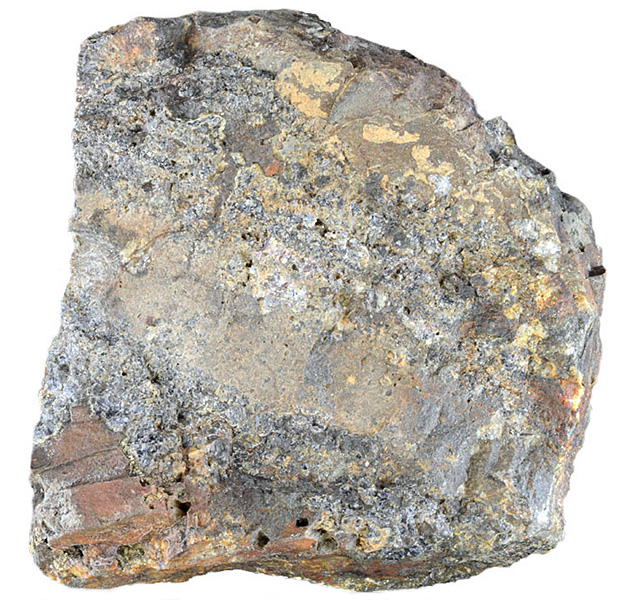
Fact sheet
This xenolith sample comes from Kilfinichen Bay, Isle of Mull, Scotland, where it was discovered in basalt intruded during the Paleogene. The rock was originally a sediment metamorphosed during regional metamorphism in the Caledonian orogeny, but was then subjected to very high temperatures (up to 1100 °C) as it became incorporated in the lava flow during the Paleogene period. This rock is an extreme version of contact metamorphism leading to complete recrystallisation of the original minerals in the rock and even the formation of pockets of melt.
Melt pockets that formed during immersion in the basalt lava flow are prominent in the thin section, and are formed of a randomly oriented matrix of fine-grained plagioclase and pyroxene. Vesicles in the melt pockets have been filled by zeolites with radiating crystal bundles. Large grains of cordierite (unusually free of mineral inclusions) exhibit sector zoning, and circa 100 micron grains of cordierite dominate many of the remaining areas of the thin section. The rare mineral mullite is present, visible in this thin section as radiating stars of lozenge-shaped crystals and easily recognised by its pink colour and pleochroism.
The United Kingdom Virtual Microscope (UKVM) collection consists of igneous, sedimentary and metamorphic rocks from around the UK.
It is intended as a teaching resource, helping to tell the story of the common rock types and how they form, and reflecting the history of the UK at the margins of the continent of Europe. The collection is a series of teaching sets, for example igneous rocks from the North Atlantic Igneous Province and SW England; high-temperature metamorphic rocks from Scotland and low-temperature metamorphic rocks from Wales; and sedimentary rocks, including English limestones and sandstones.
